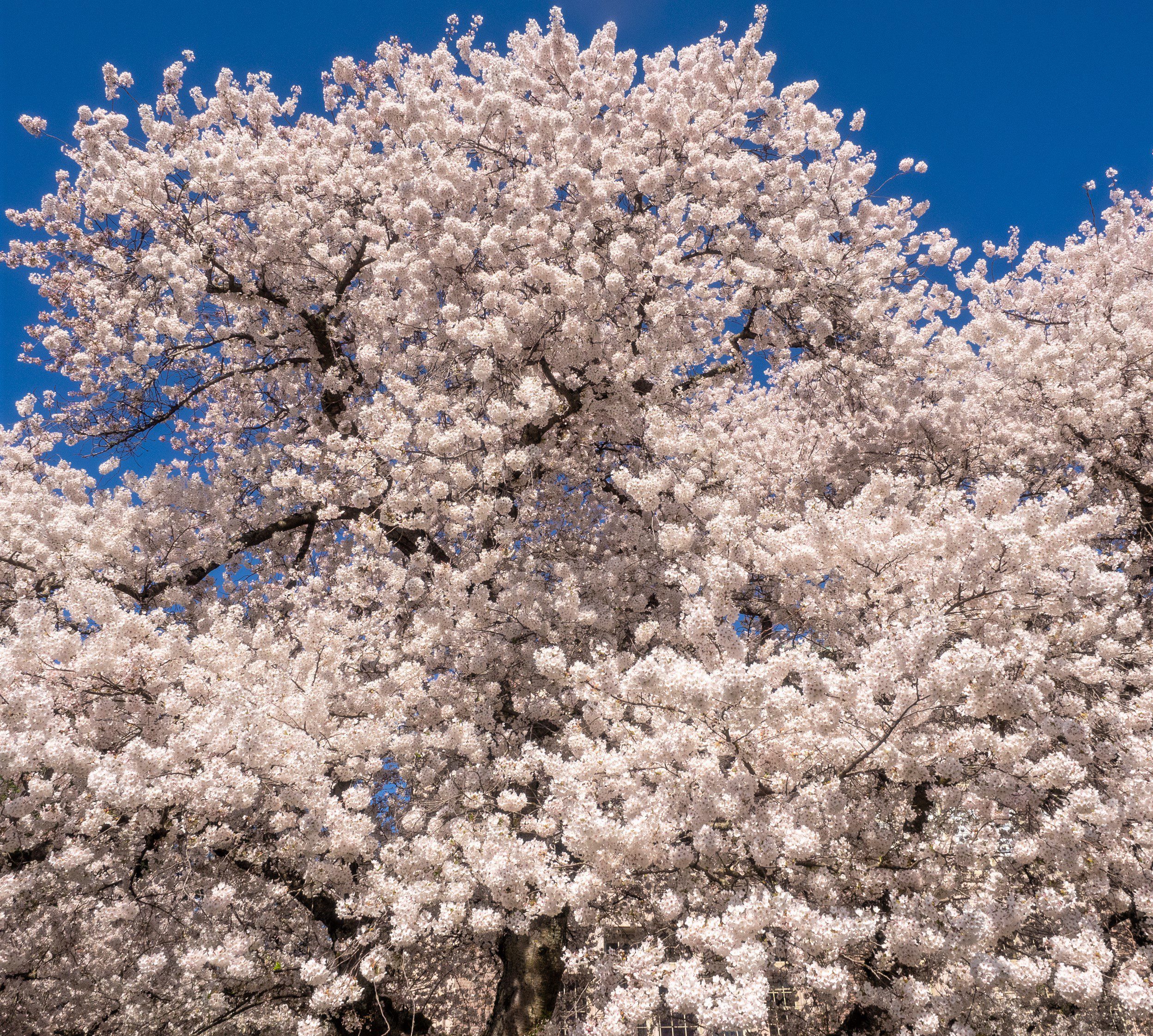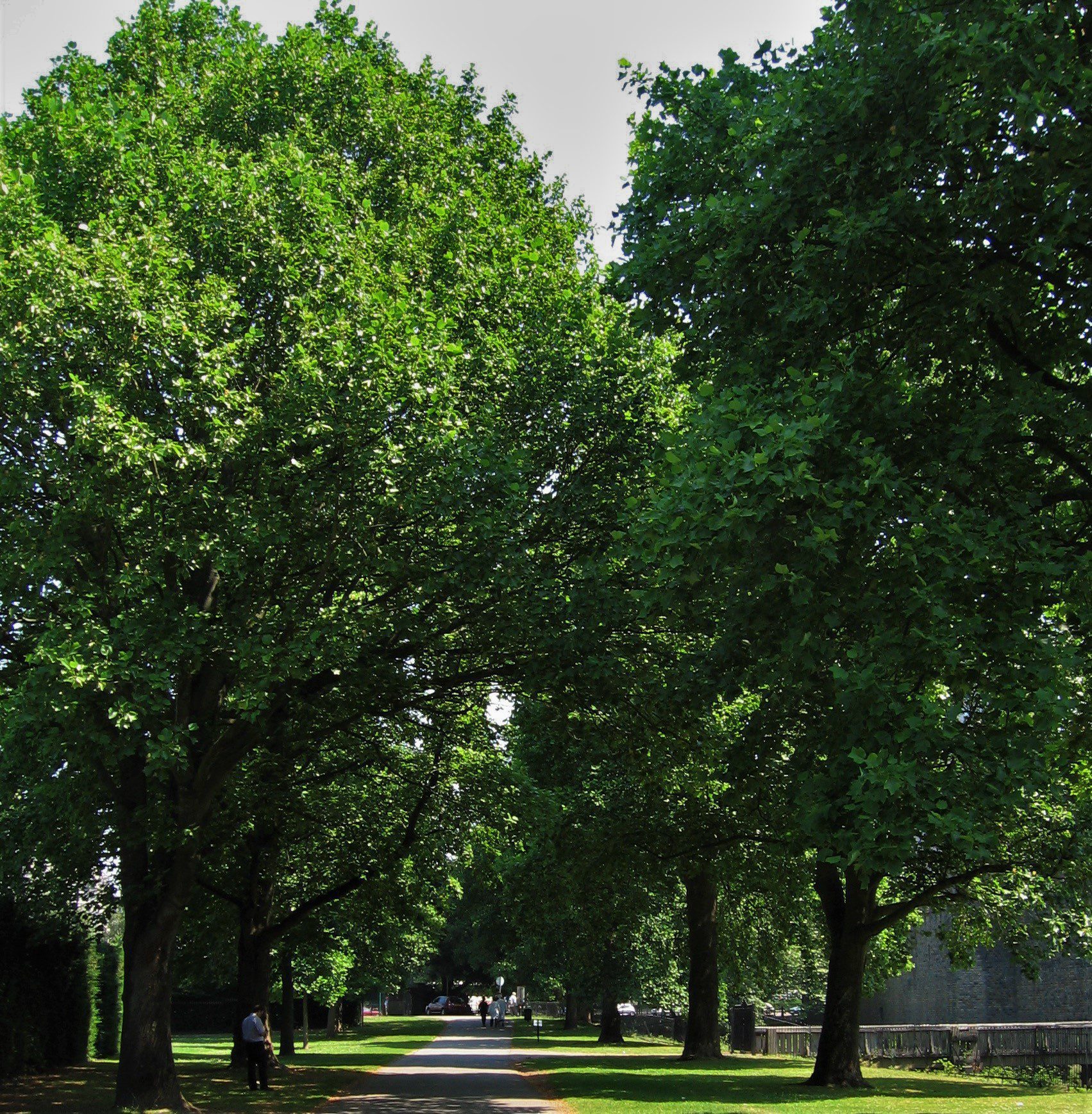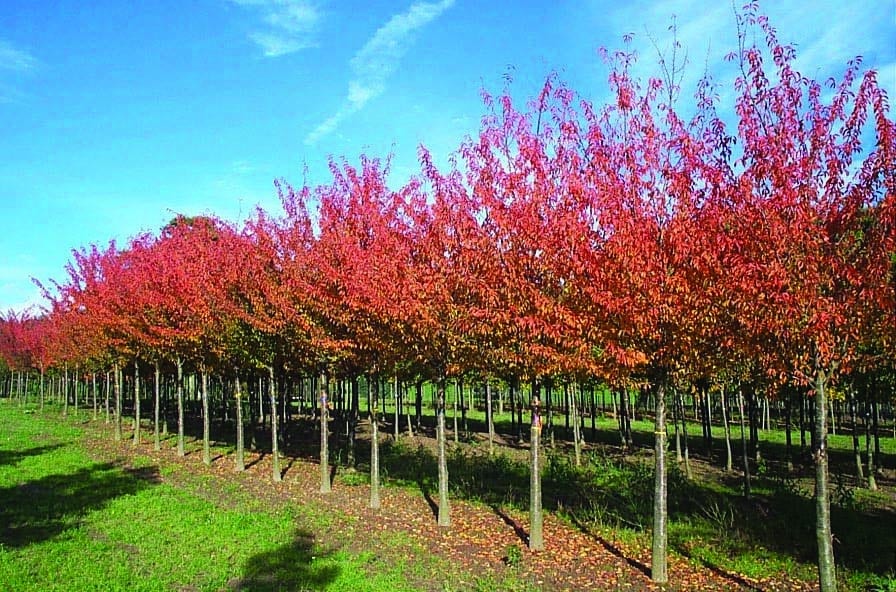Designing with shaped trees bring many attributes to the landscape: height; colour; seasonal interest; structure; drama; screening; habitat; the list goes on.
From a designers point of view, one of the most useful qualities is the shape of the tree. Trees are versatile and can be used to create a variety of effects naturally or through human intervention. Shapes can be created for designs through topiary and intelligent pruning. At Hillier Trees, we offer a wide variety of shaped trees, whether through their natural form or through skilled shape training. Here’s how you can design with shaped trees: consider their form, function, and seasonal beauty to enhance your landscape with structured elegance and creative flair. Whether you’re aiming for formal garden spaces, intimate outdoor rooms, or striking focal points, designing with shaped trees can transform any space into a dynamic and enduring work of art.
Natural Shapes
Multi-stem trees
Multi-stem trees arise as a result of coppicing young trees. They create natural branching structures and greater interest at lower levels than their standard counterparts. Many of the British grown trees from Hillier are available as multi-stem. These have been selected to make the most of their stem colour, or to bring their flowers and seasonal leaf interest to a scale that can be enjoyed at eye level.

Fastigiate trees
Another natural form of shaped tree is fastigiate selections. These can be useful to introduce strong forms without the need incorporate annual maintenance plans to clip the trees back into shape. Fastigiate trees exist across a variety of genus, covering small, medium and to large growing trees. Many of these benefit from being branched all the way to the ground as ‘feathered’ trees. However, most are available with a clear stem and can be specified at the time of enquiry.
Smaller growing columnar variety
Medium growing upright varieties
Large growing fastigiate forms
- Acer platanoides ‘Columnare’
- Fagus sylvatica ‘Dawyck’ (all three colours)
- Quercus robur ‘Fastigiata Koster’
- Ulmus ‘Columella’
Globe or dense, rounded canopies occur naturally in a number of species and can offer real impact in both large and smaller schemes. The main ones offered at Hillier are:
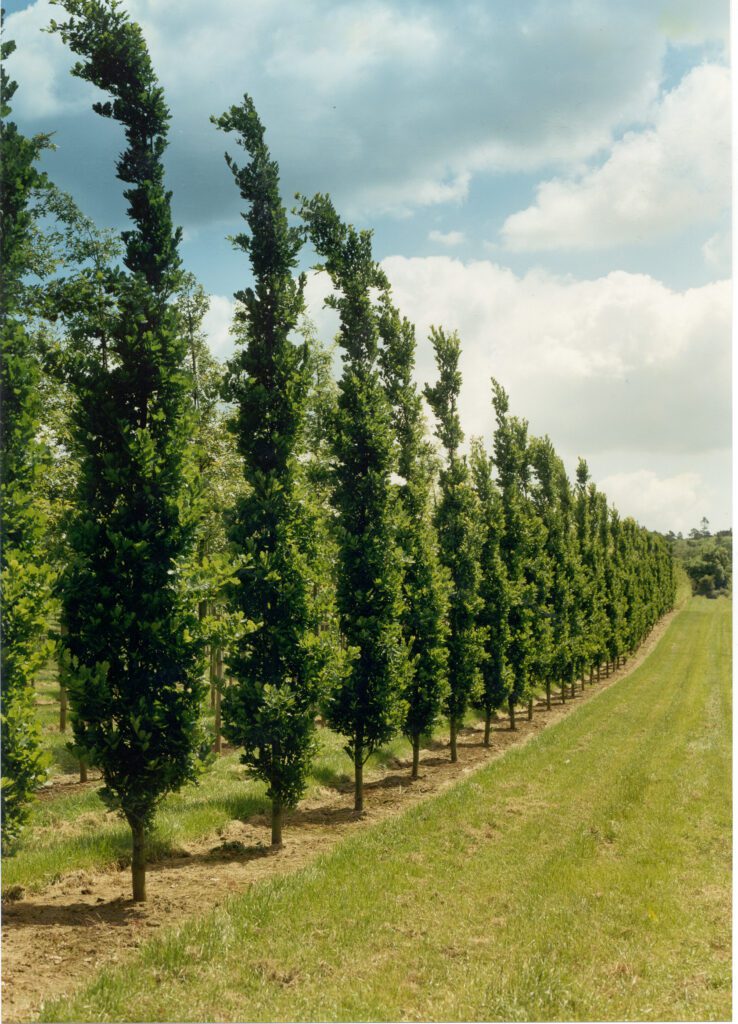
Clipped Shapes
For formal shapes, clipped topiary provides very strong design features. Additionally, some species are naturally able to thrive when pruned on a regular basis. Consequently, these trees will need regular pruning once planted to maintain their shapes. However, depending on the species and the desired level of formality, annual pruning or twice-yearly pruning should suffice. To achieve the best results, design with shaped trees to create structured, visually appealing landscapes that showcase the beauty and versatility of carefully maintained foliage.
Pleached Trees
These are trained into flat, two-dimensional shapes, usually with a clear stem. The most common varieties of pleached tree are Tilia or Carpinus, however on a smaller scale it is popular to use flowering trees such as Malus or Pyrus. Evergreen trees, such as Photinia, Holm Oak and Laurel can also make effective pleached trees.
Tiered pleached trees have single horizontal stems – like espalier fruit — and are more delicate in their appearance than standard pleached trees. Typically, these would have a 2m clear stem, then five tiers of branches 30cm apart. Panel pleached trees have a solid canopy. These are a little like a hedge on stilts, and are more suitable for screening purposes.
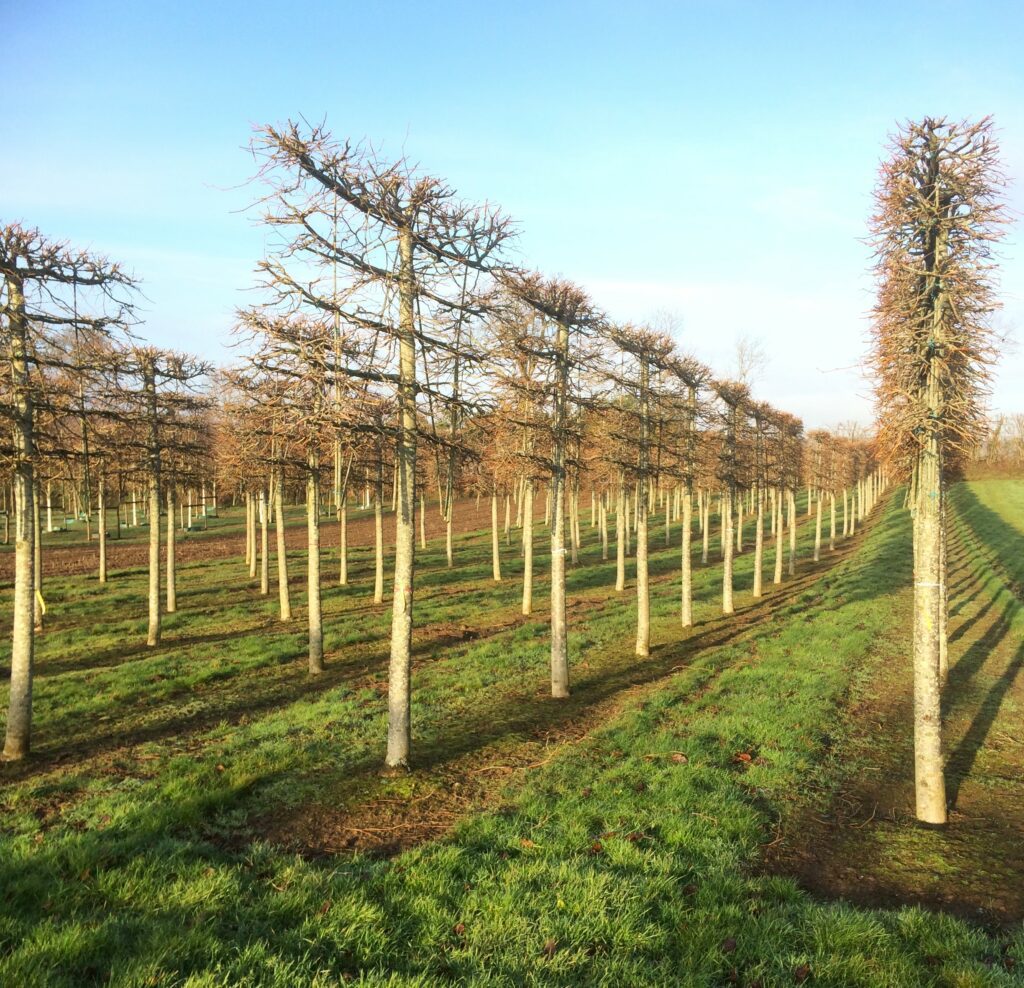
Cubed or Box-head Trees
These are ideal for achieving height and interest in a small space and a strong three-dimensional impact when used in greater numbers on a larger scale.
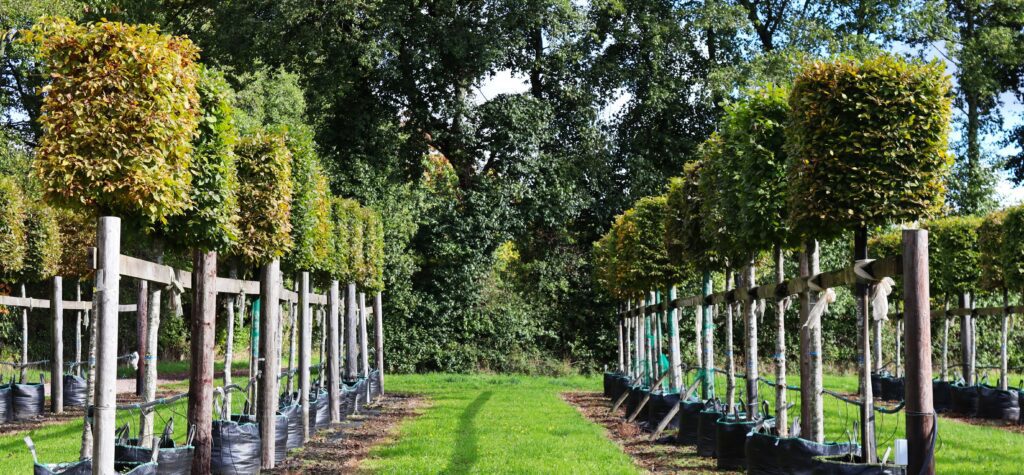
Globe Clipped Trees
These have a similar use as cubed trees, but the shape gives a friendly relaxed formality to a space.
Parasol Trained Trees
Parasol trees, a prime example of designing with shaped trees, have a central clear stem with a flat spreading roof of trained branches. These are ideal to create a natural parasol to entertain guests outside in the shade both domestically or in the public realm – think coffee culture and relaxed plazas!
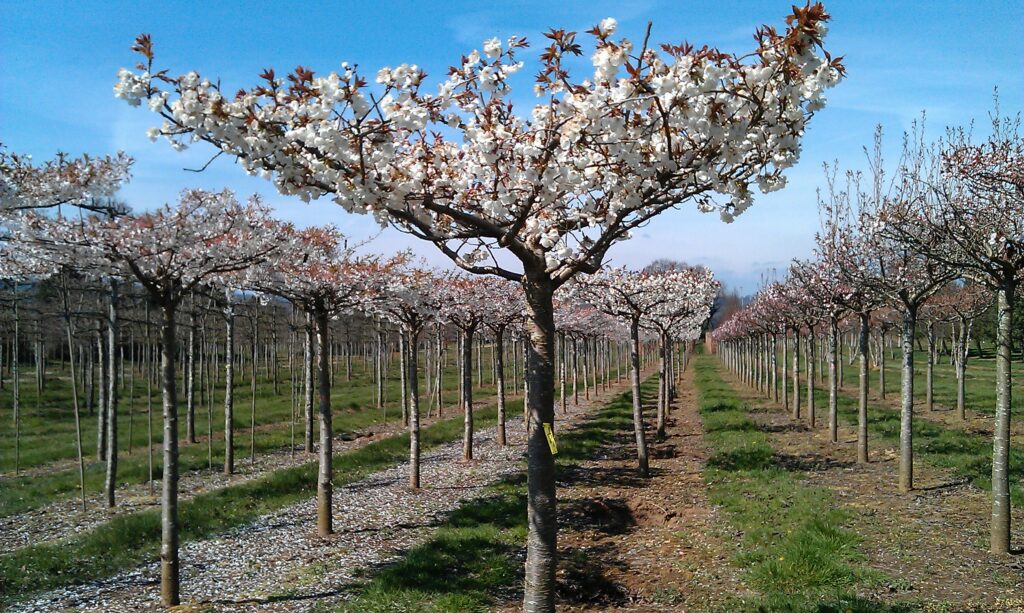
Pollarded Trees
Pollarded trees are not just for urban streets, although they are an effective form of tree management. Tilia and Salix can also make striking pollards that convey a different atmosphere — like a pollarded Tilia avenue creating a relaxed sense of arrival to a rural retreat or country farmstead.
Column Pruned Trees
Use these to punctuate a garden or public urban space, either randomly or as a row of pillars to demark sections. Their dense habit with short internodes makes Carpinus and Fagus the most commonly used.
Archways
Archways, a classic example of designing with shaped trees, create instant entrances or natural pergolas if used in numbers. Typically grown as Fagus, these archway-trained trees provide lush green arcs in the spring and summer, and display beautiful orange-brown hues in autumn and winter.
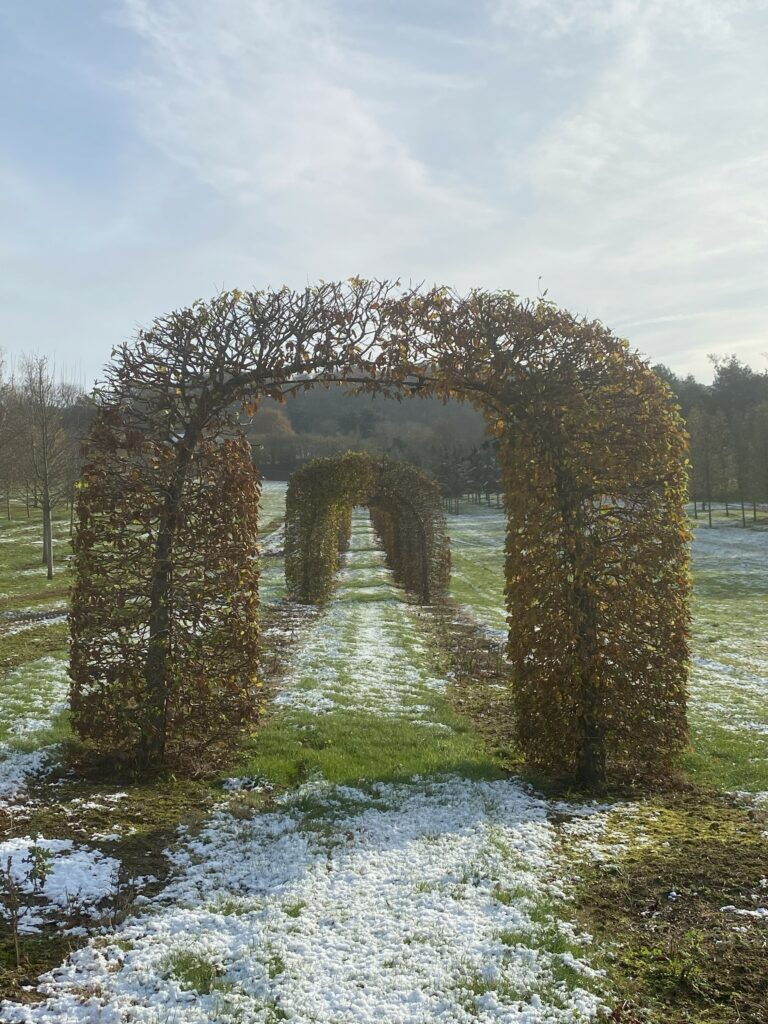
Full Panel Trees
Similar to pleached panels, these have branches extending down to the ground. They excel at dividing small spaces, creating ‘rooms’, and screening unsightly areas.
Cloud Pruned Trees
These living works of art result from years of meticulous pruning. Since each piece is unique and requires a significant investment, customers should hand-pick and tag them personally.
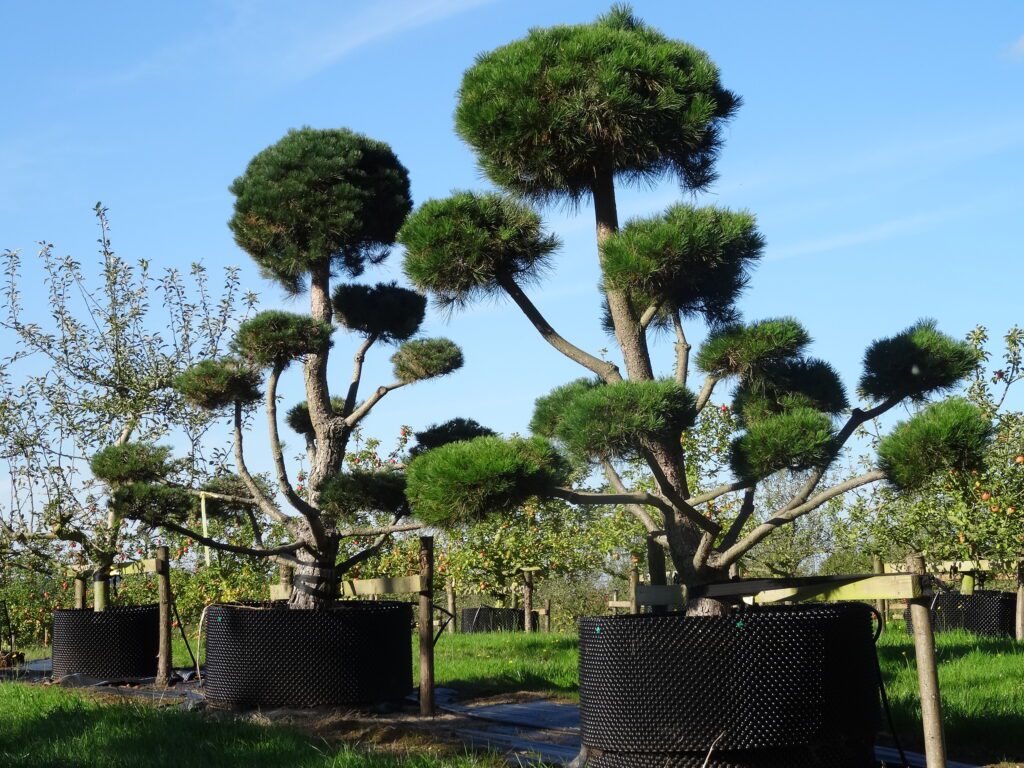
Spindle Pruned Apples Trees
Shaped in the traditional way, these trees allow you to pick fruit from two layers
To discuss your design with shaped trees, contact our sales team.

